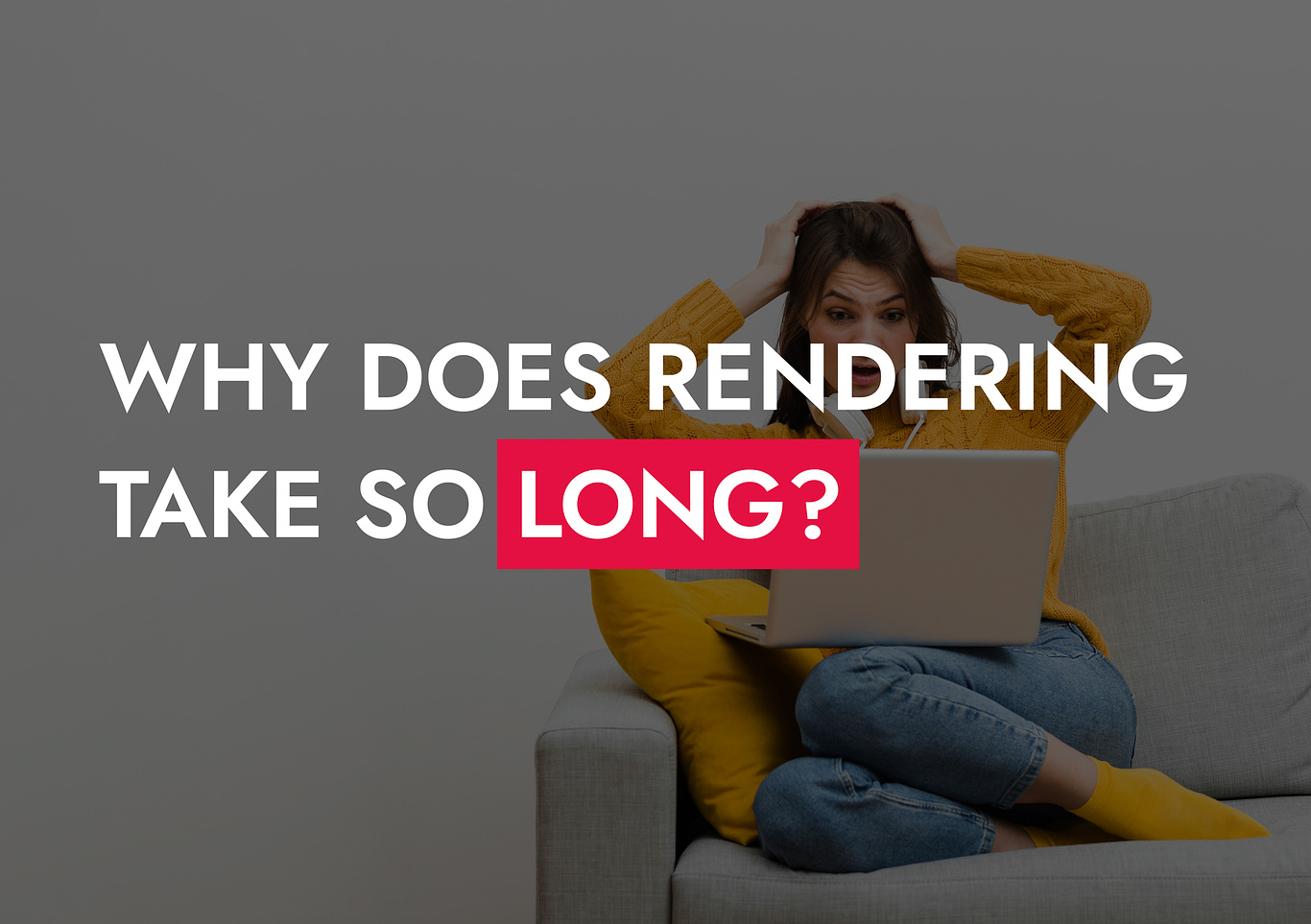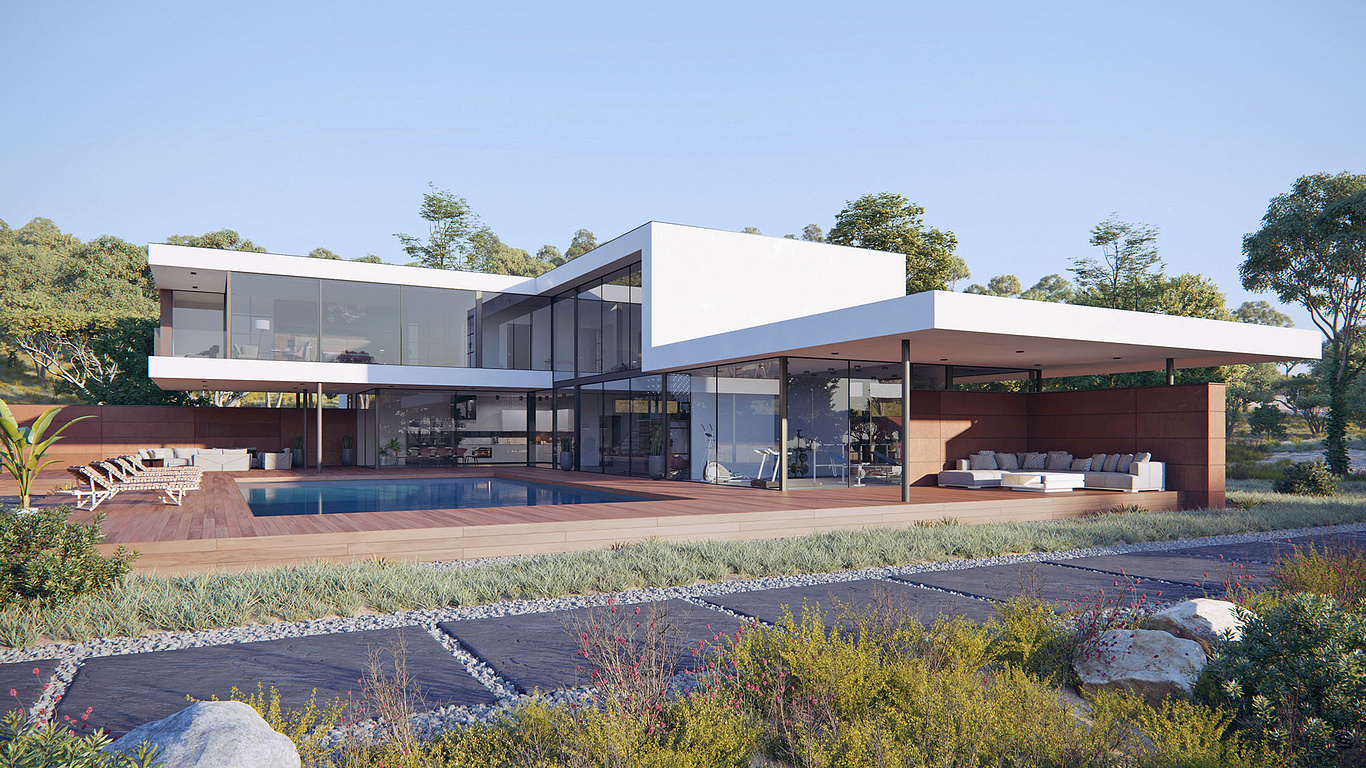
Other
Why Does Rendering Take so Long?
(*which is, technically, not true)
Everybody who has ever been involved in the visualisation process as a customer or a 3D artist (a visualiser) probably realizes that a render is something very different from an instant photo. A visualizer is familiar with the technicality, whereas the client might ask ‘Why so long?’, or ‘Why SO long?!’ I must say these questions are not entirely groundless but they have quite logical answers to them. Let’s try to figure out what is all the precious time spent on and if the process can be sped up.
Everybody who has ever been involved in the visualisation process as a customer or a 3D artist (a visualiser) probably realizes that a render is something very different from an instant photo. A visualizer is familiar with the technicality, whereas the client might ask ‘Why so long?’, or ‘Why SO long?!’ I must say these questions are not entirely groundless but they have quite logical answers to them. Let’s try to figure out what is all the precious time spent on and if the process can be sped up.
They say the worst things in the world are waiting and trying to catch up. Well, rendering is all about it – a client is waiting while the team of visualisers are making every effort to meet the timelines.
What does the execution time depend on? As usual, it is about the confluence of factors. The obvious, and probably the most important are
The Level Of Expertise And Quality Of Equipment
As with any other business, the higher the expertise of the 3D artist and the more experienced they are, the less time is required to perform a task. As a consequence, work of an experienced specialist costs more but that is a whole different story. Roughly speaking, what a rookie will need a day for; a professional will handle within an hour. That is also where technical capacities come into play, because even if you are a visualisation guru, you will not be able to do anything with slow and weak equipment.
Let’s leave out these two factors in our further analysis and consider the degree of expertise and technical capacities to be sufficient for proper rendering. What other factors can affect rendering time?
Quotation And Prearrangement
Prior to kicking off any project is the preparation stage, which sometimes takes as long as the execution of the task itself. This is a very important phase because it defines how fast and consistent the whole team’s work will be.
It is absolutely crucial that both sides go over the tiniest details, which may seem minor and not so obvious at first glance, but very important for further work. Besides, a thorough initial review of the entire technical task helps to properly assess the timescales and cost of the project. The correct preliminary preparation before creating a render will definitely save you some time and nerves in the future (e.g. during the revision stage, but we will get into this later).
Type Of Render
There is a difference between developing an interior and exterior visual. From the technological perspective, the development of an interior CGI is a bit easier because it is a confined space with a limited number of elements. Certainly, the view out the window also counts but this process has its technological peculiarities. And of course, the number of objects which have to be modelled plays a role in this as well.
Exterior visualization has its ins and outs. Depending on the type of render, the existing 3D model of (a) building(-s) can be incorporated into an already existing landscape (you can check out how we do it here), or alternatively, it can be recreated as a full-fledged CGI. And, sure enough, each process requires preliminary preparation. In the former case it is quality aerial photography (more about AVR you can find out in our article). In the latter case, it is a detailed examination of the terrain that needs to be recreated in a CGI, as well as vegetation and other peculiarities of this particular area etc.
Exterior visualization has its ins and outs. Depending on the type of render, the existing 3D model of (a) building(-s) can be incorporated into an already existing landscape (you can check out how we do it here), or alternatively, it can be recreated as a full-fledged CGI. And, sure enough, each process requires preliminary preparation. In the former case it is quality aerial photography (more about AVR you can find out in our article). In the latter case, it is a detailed examination of the terrain that needs to be recreated in a CGI, as well as vegetation and other peculiarities of this particular area etc.
Level Of Detail And Image Dimensions
That makes perfect sense – the more detailed the image is, the more scrupulously all the fine details should be approached, which in its turn requires more time. The more populated with various objects the image is, the longer it takes to put it all together. For instance, a studio render of a table takes much less time than an interior render of the same table.
Photorealism is also one of the factors that affect timing. It seems the time when clients expected to receive an approximate image in the end has long gone. Nowadays technologies allow creating images that are almost impossible to tell from a photo. But images which look beyond real require more time both at the development stage and at the stage of post production.
One more factor is image resolution. It is quite obvious that visuals made for booklets, social media or promotional materials for a website or a catalogue will be of lower resolution than those for billboards.
Number Of CGI Revisions
This one is probably not very pleasant, but very real.
Both customers and contractors have one goal which is to get a beautiful visual as a result of cooperation. To achieve this goal, the whole process should be carefully agreed upon.
Let’s be honest – nobody likes comments but it’s pretty clear that they are inevitable and, moreover, absolutely necessary. But sometimes the client is not sure what exactly is wrong with the image and starts changing minor details.
Let’s be honest – nobody likes comments but it’s pretty clear that they are inevitable and, moreover, absolutely necessary. But sometimes the client is not sure what exactly is wrong with the image and starts changing minor details.
Thus, the whole process of commenting on drafts turns into changes for the sake of changes. And since communication, as well as work on amendments and the very rendering process takes some time, it might appear that this is one never-ending process.
Luckily, this can be optimized by prior agreement on the number of draft revisions and providing full consolidated feedback on each iteration of draft.
Therefore, rendering is a process, which requires cooperation and effective communication between both sides – client and contractor. But well-coordinated teamwork of the two parties makes for a well-coordinated process and a wonderful outcome in the end.
You must be logged in to post a comment. Login here.
About this article
Everybody who has ever been involved in the visualisation process as a customer or a 3D artist (a visualiser) probably realizes that a render is something very different from an instant photo. A visualizer is familiar with the technicality, whereas the client might ask ‘Why so long?’, or ‘Why SO long?!’ I must say these questions are not entirely groundless but they have quite logical answers to them. Let’s try to figure out what is all the precious time spent on and if the process can be sped up.
visibility7
favorite_border0
mode_comment0
About the author

VisEngine Digital Solutions
Marketing manager, Project manager at VisEngine Digital Solutions
placeLondon, GB




